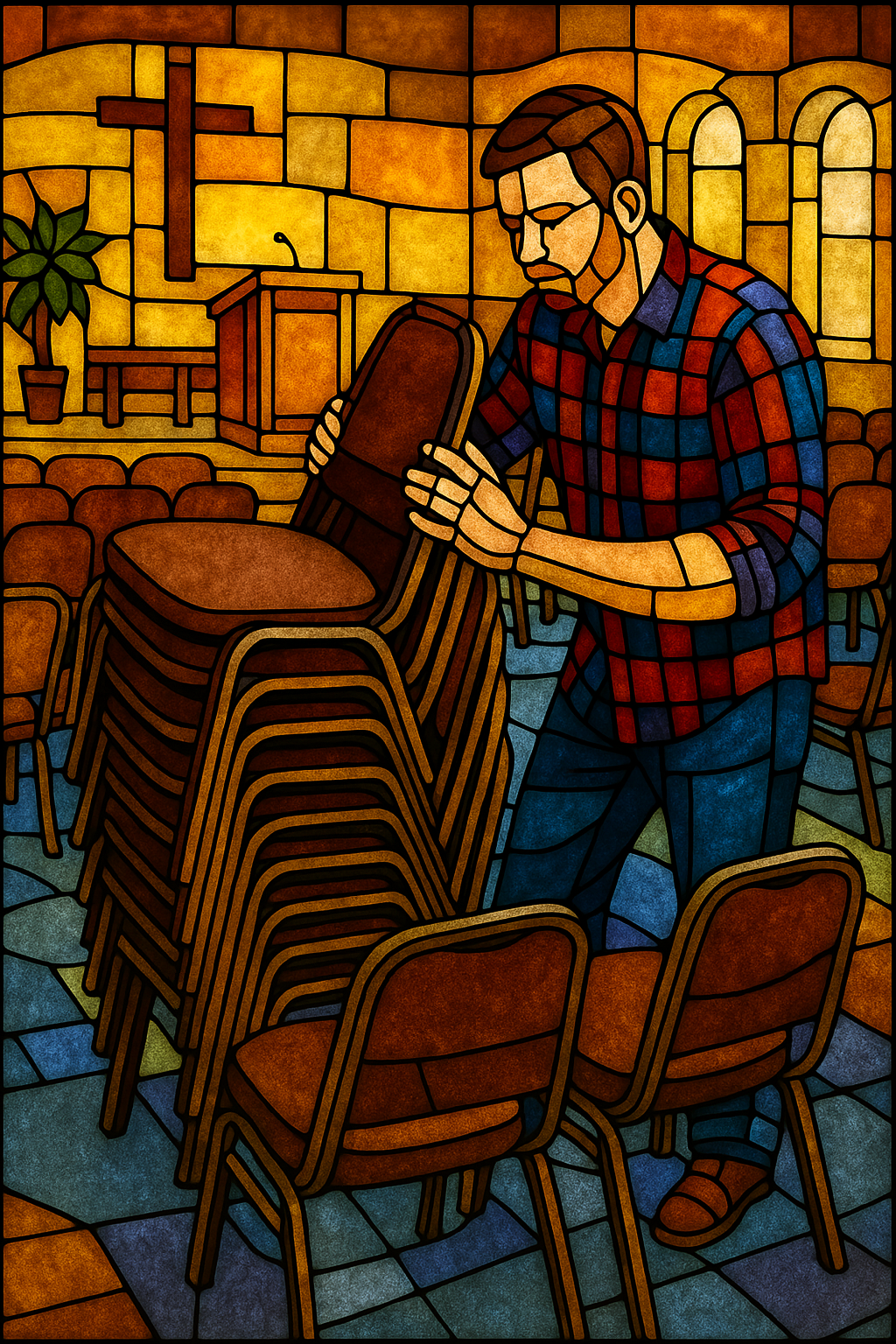
WHAT THE INCARNATION TEACHES US ABOUT HEALTHY MINISTRY CULTURE
The incarnation is God’s declaration that He works redemptively inside imperfect circumstances—not outside them.
Christmas is not about creating a perfect scene.
It is about God entering an imperfect world.
For church leaders, this is more than inspirational. It is a model for how God builds His kingdom—not through flawless execution, but through humble surrender.

Teaching Truth in a Time of Deception
False teachers and manipulative “prophets” aren’t new. But their platforms are larger and their influence faster than ever.
Whether it’s a viral TikTok prophet, a self-proclaimed apostle, or a bestselling author who subtly redefines the gospel, the damage can be profound.
When we fail to teach sound doctrine with clarity and conviction, we leave our people vulnerable. And when pastors hesitate to correct error for fear of offending, falsehoods multiply unchecked.

The Gospel of Self
Pride is the fountain of all other sins, and that’s what this false gospel is rooted in.
But it’s presented to us in a rather innocent way initially. Ever heard the maxim, “My faith is personal”?
That is the soil where the gospel of self plants and germinates.
The statement sounds true, but it is a half-truth. A half-truth is even more destructive than a full lie. A lie is at least readily detectable. But a half-truth slinks in next to all the other truths we celebrate without detection.

The Prosperity Gospel
Imagine approaching a vending machine. You’re hungry or thirsty, and you know exactly what you want—so you insert your money, press the button, and wait for the machine to deliver. You’ve done your part. Now it’s time for it to give you what you paid for.
That’s how many approach God today.
We “insert” faith—church attendance, generosity, prayer, positive confession—and expect God to deliver health, wealth, or success. When He doesn’t, we question His goodness or our faith. But the problem isn’t that God didn’t deliver—it’s that we approached Him like a machine, not a Master.

The QUIETIST GOSPEL
During a brutal war, a man found refuge in an underground bunker. Hidden deep in the hills, stocked with supplies, it was safe. While the world above burned, he stayed tucked away, whispering, “At least I’m not adding to the chaos.”
He heard cries in the distance—families fleeing, children begging for help, a wounded soldier calling out. He paused. Sometimes he even prayed. But he never opened the hatch. “It’s dangerous out there,” he told himself. So he stayed—safe, but silent. Preserved, but powerless.
That’s what the Quietist Gospel looks like. It reduces Christianity to spiritual escape: Don’t engage. Don’t get involved. Just wait for heaven. It emphasizes safety over sacrifice, retreat over mission, preservation over proclamation.

The Moralistic Gospel
Imagine running on a treadmill. You’re sweating, striving, and exhausted—but no matter how hard you run, you’re not actually getting anywhere. The scenery never changes.
Not to diminish the benefits of a good cardio workout, but that spiritual sense of hard work and effort leading to nowhere sums up the Moralistic Gospel.
Moralism reduces Christianity to a set of rules:
Be good.
Do right.
Try harder.
Be different.
Of all the other gospels, this one often sneaks under the radar in many churches.

My thoughts on Charlie Kirk
Who was Charlie Kirk?
The honest answer: unless you knew him personally, you don’t really know. Not fully. Neither do I. But I am making an effort to learn what I can.
I know he was a staunch, vocal right-wing political activist.
I know he openly proclaimed Jesus Christ in the public square.
I know he had a platform and reach among young people that few of us can imagine.

the judgmentless gospel
If we’re honest, many people—including churchgoers—prefer a judgmentless God. In a 2021 Pew Research survey, 73% of U.S. adults said they believe in heaven, but only 62% believe in hell. Even among Christians, a significant number reject the idea of eternal punishment (Pew Research Center, 2021).
Why? Because judgment makes us uncomfortable. Our culture prizes tolerance and affirmation, and “sin” just sounds too negative, too harsh. We’d rather imagine a God who never confronts, never convicts, never condemns.
But here’s the problem: a God who never judges is not loving. He’s actually negligent. Just like the city with a judge who refuses to uphold justice, a world without divine judgment becomes chaotic, unsafe, and hopeless.

The Therapeutic Gospel
We live in a culture that prizes self-fulfillment above almost everything. According to Pew Research (2022), 84% of U.S. adults say enjoying what you do in life is essential to fulfillment, but only 20% say living a moral life is essential. In other words, feeling good is valued far more than being good.

The Scheme of Satan
If you’ve ever seen warning labels on a poison label, you know they’re meant to get your attention: “Danger. Deadly if swallowed.” But say someone removes the poison label, slaps on a Coca-Cola label, and the color of the liquid is doctored. The substance’s true nature is much harder to detect. But its lethality remains.
Satan doesn’t present us with a bottle marked “poison.” He gives us something that appears safe for consumption.

creating space for the family to flourish
Our greatest joys and deepest wounds originate in the family.
That phrase hits home because it’s universally true.
Family life is messy. Whether you grew up in a stable home or a dysfunctional one, every single one of us carries spoken and unspoken wounds from our family of origin. The data backs it up too: a Pew Research study found that 54% of Americans say their family is a source of both love and stress.
So here’s the question for churches serious about health:
Are we creating space where real families—with real brokenness—can flourish in the gospel?

Building for Eternity in a Technological Age
What does it mean to build something that lasts?
Not just something efficient. Not trendy. Not viral.
But eternal.
Because that’s the calling for the church in every generation—whether it’s building temples out of cedar and gold, or building communities through screens and signals.

The Gospel and Technological Redemption
If Babel is the story of humanity building its way up to the heavens, then the gospel is the story of God coming down.
That’s what makes Christianity so radically different. In a world obsessed with progress, platforms, and power, Jesus shows us a different way—a downward way.
In this part of our series, we’re asking: What does the gospel have to say about our technological moment? Can technology be redeemed? Or are we doomed to replay the same pattern of pride and confusion we see in Genesis 11?
Let’s begin with this simple truth:
Jesus is not anti-technology. But He is anti-Babel.

The Dangers of Autonomous Progress
We live in an age that preaches progress.
Tech leaders like Yuval Noah Harari and Elon Musk talk openly about becoming “like gods.” Life extension. Artificial intelligence. Uploading consciousness. Beating death.
And if you listen closely, you’ll notice: we’re not just making better tools. We’re trying to build a better Eden—except without God.
In the last blog, we asked whether technology is inherently good or bad. We landed on something deeper: technology is never neutral because it is always forming us.
But what happens when that formation is no longer tethered to God’s design? What happens when creativity becomes autonomy?
Welcome to Babel.

Embracing Innovation with Discernment
Many in the church like to imagine that technology is just a neutral tool. But as Andy Crouch, author of The Tech-Wise Family, notes, tools are never neutral. They always carry embedded values and assumptions.
Just think of the phone in your pocket. It doesn’t have a will of its own, but it does shape your attention. Your sleep. Your habits. Your emotions. Your theology, even. That’s not neutrality—that’s formation.

Shaping a gospel culture
When people think of revitalization, they often think of strategy: new plans, new programs, new ideas. But revitalization isn’t first strategic. It’s cultural.
You can have the right systems and still bear little fruit if your church culture is unhealthy. Conversely, a healthy culture can carry a church through seasons when structures are still catching up.

Start with people, not programs
In today’s cultural climate, trust in institutions is at an all-time low—including the church. According to a 2023 Gallup study, only 31% of Americans say they have confidence in organized religion. That means the people in your pews (and outside them) are skeptical of authority, change, and systems.
That’s why relational leadership is essential. As a pastor or church leader, you’re not just managing an organization. You’re shepherding people through grief, disappointment, and, often, disillusionment.
Revitalization can’t be rushed.

What Is Church Revitalization, and Where Do We Begin?
“Revitalization” isn’t in the Bible—at least not by name.
Like “Trinity,” the term isn’t found in a concordance, but the theme is threaded through the entire story of Scripture. From Eden to the New Jerusalem, God is in the business of breathing new life into what is weary, broken, or dead.
That’s what Merriam-Webster means when it defines revitalization as “giving new life or vigor to.” The Cambridge Dictionary adds, “to ignite the process of making something grow, develop, or become successful again.” That’s what God has always done with His people.
And it’s what He’s doing in His Church.

What Was and What Could Be
When the life cycle of something ends, be it a person or a particular season with a community of faith, a holy tension exists. There is gratitude for what was and grief over what has been lost. Between the hope of what could be and the sobering reality of what now is.
It is far too easy to reduce church health down to the cold, brutal facts or magic bullet solutions. But to make church life about metrics and methods is reductionistic.

The Power of Faithful Presence
Sometimes it feels like the work we do for the church doesn’t matter.
You stacked chairs again.
You answered one more email.
You stayed late to lock up. You preached a message you felt didn’t stick.
And it’s easy to wonder, Does any of this even count?
But here's the thing about Kingdom work: it often looks small. Unnoticed. Hidden. Like a mustard seed. Like a pinch of yeast in dough.
But that’s exactly how the Kingdom grows.
In Matthew 25, Jesus tells a story about the end of days. The King looks at his people and says, “I was hungry and you gave me something to eat. I was thirsty and you gave me something to drink… I was a stranger and you invited me in.”

